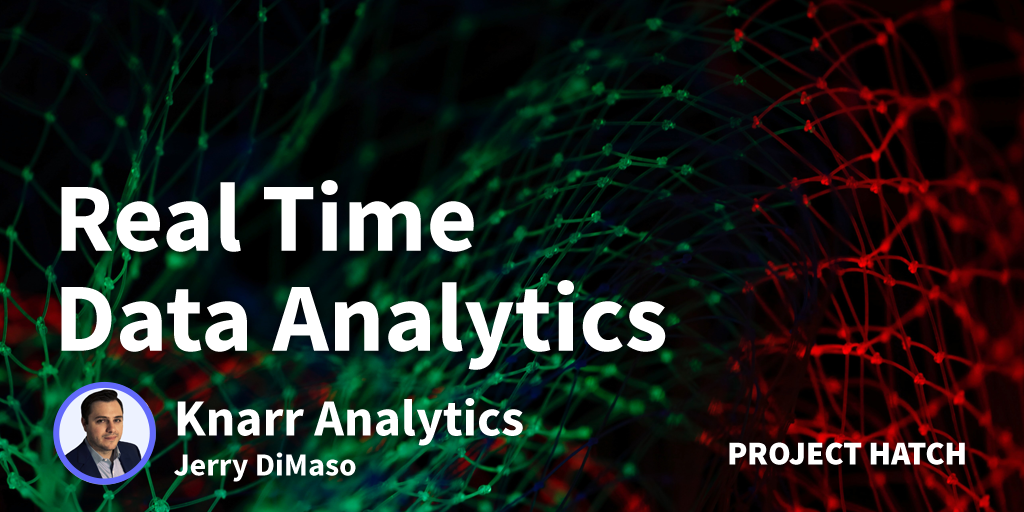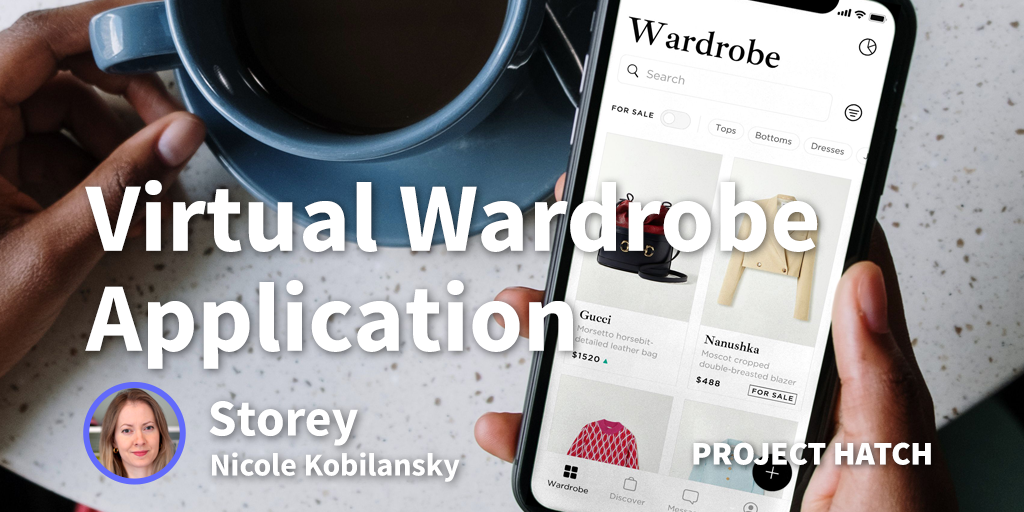Knarr Analytics is co-founded by Jerry DiMaso, a passionate leader and author in the analytics space who has spent the past decade developing applications, advising on data and analytics strategies, and building analytics products.
Knarr Analytics is a collaborative cloud-based data analytics tool. It helps companies visualize, annotate, and share data in real-time. This software helps solve business problems faster and more collaboratively.
Was it a gradual decision or lightbulb moment to start Knarr Analytics?
When Speros Kokenes and I started talking about building an analytics and data visualization tool, we thought we knew exactly what the community needed and precisely what we would build. Now, years later, we have a product that barely resembles what we envisioned in that first meeting. This happens with many tools and startups, of course – after going through user interviews, design sessions, architecture reviews, more user interviews, sprint planning, feature adding, feature deleting, and more, things are bound to evolve. Oddly enough, I’m content with the detours we took and proud of how Knarr has grown. Ultimately, our patience helped get us from the initial vision of a data visualization tool to the rapid-fire, frictionless collaborative analytics tool we ended up building.
How did you validate the idea?
We interviewed different people in the analytics and visualization community, and leveraged our networks to get 30-minute sessions. almost every interview began the same way, with skeptical questions about why we are trying to build a tool in such an established space and what makes us different. Once we showed the collaborative capabilities, without fail there was an “aha!” moment for every person we interviewed. “This is a game-changer” is something we heard a lot. That’s how we validated that this was a good idea to pursue.
Did you have any experience/expertise in the area? And have you raised any money?
With 18 years of experience in the analytics space between us, we had a lot of insight into the challenges faced by users of our dashboards and analytics tools. . They always had more questions that needed to be answered. We have taken no funding so far.
Who is your target demographic?
Our target customers are teams using data to get answers to their daily/weekly questions. This includes analysts that are constricted by the visualization tools that are available, or are currently working off spreadsheets. We also build for advanced business users that need the freedom to explore data whether it’s governed or not. Finally, BI developers who need to consistently explore new data sets and rapidly prototype solutions that will be useful for their business partners.
How did you find the idea initially?
We were consistently hitting the same challenges with customers, having to develop custom solutions that integrate existing BI tools but don’t really use any of the UI functionality they provided. We used to think exporting data from BI tools to Excel meant we didn’t do a good enough job with designing the dashboard or the custom UI, but in reality, there is just no way to predict what questions will need to be answered and what data may provide those answers. There is no way to build a system that obeys the confines of a dashboard while simultaneously being useful to solve unpredictable problems. We had to shatter that concept of rigidity and governance and accept that analytics is a messy process that requires creativity and perspective. It’s like any kind of research.
Where did you meet your co-founder?
Speros Kokenes and I both started out at the same consulting firm. We collaborated on many of the same projects, finding innovative solutions for our top clients. We found we were able to challenge and balance each other’s experience to find the best results.

As we each grew into leadership roles and found our own spaces within the data community, we found that we still shared the same passion for developing those solutions, and were uniquely suited to bridge the gaps we saw within the industry.
Any tips for finding first employees?
When interviewing employees, we ask them to pitch the company vision back in their own words. We then ask how they are going to be a part of making it happen, giving them some time to think about it. This not only allows you to see who understands and passionately shares your vision, but who can strengthen it.
Did you run any companies prior? And What motivated you to start your own business?
Both of us were in leadership positions at a consulting firm. We were motivated to start our own business because of the passion we felt for helping customers with this new way to explore their data. By consistently hitting the same roadblocks with traditional BI tools in both small and large companies, we knew our product would help fulfill a critical step missing in the data analytics process. We decided to create this as our own business to branch out and create something that would be our own, since we had a strong vision for the product built by our years of experience.
What were your family and friends first thoughts on your company?
We have a good reputation for success, and we’ve worked on some large customers and are active in the community. Our friends and family were excited for us, and many offered to invest. We didn’t really have the resistance that others sometimes face of “really, you’re starting your own business?” In fact, some people asked what took us so long.
What motivates you when things go wrong? What is the end goal?
When things go wrong, we take a step back and reassess the vision. We know what we’re building is going to change the way analytics are produced in the world. We know that we have a great product and even if we stumble on a sale or roll out a feature that’s not so well-received, we are confident in ourselves and our abilities.
Do you have any advice for someone just starting out?
If you’re just starting out, the best advice I can give is that you better believe in what you’re doing or you’re not going to be able to find the motivation to do all the grind work that needs to be done to be successful. In the beginning we were patient with features, and we listened to our procrastination monsters; if we were having a hard time motivating ourselves to put in a feature, that probably meant that the feature wasn’t a great fit and we should skip it. we were all really excited about implementing every feature we ended up adding to Knarr - and the motivation was what got us there.
What has driven the most sales?
Currently Google ads are our top source of signups. Because we are a first-to-market tool, hyper targeting through keywords has allowed us to reach an audience primed to understand our value proposition. Sharing news and new product updates on Twitter has also led to organic leads and interest from the data analytics and data visualization communities.
What is stopping you being 3x the size you are now?
Right now, with our bootstrap strategy, we are constrained by cash flow, which we are okay with. We don’t want to be 3x the size we are yet. It has given us the freedom to build a first-to-market product to our vision and prioritize what are the most important features and capabilities rather than focusing primarily on external requests. In the future, we may look to expand our development and marketing teams, but for now, we’re okay.
How do you protect yourself from competition? Do you have any patents?
Our vision is what differentiates us. We lived the challenge that Knarr solves so we know exactly how to build with usefulness in mind.. Our competitors are making software for the masses, while we are creating tools for a specific use case. It isn’t worth it for our competitors to capture our market from an enterprise perspective. Compared to other competitors starting out, we have some tricks up our sleeve that we’ve learned over the past couple of years developing this product. It wouldn’t be very easy to replicate. We are patent-pending on some of our internal tech, such as our notes feature and collaborative workspaces.
What are the top 3-5 apps your business could not run without? What are the next products you’re working on?
Slack, Asana, Google docs, Github, AWS. For the mid-term future, we will be working on an enterprise release of Knarr. It’s not really a different product, but it will have different features and capabilities from an administration and security standpoint.
Are there any releases you can tell us about?
We’re working to enhance the experience to provide additional analytics capabilities, such as historical views of previous analyses, advanced analytics capabilities like statistical modeling/forecasting, and creating more features for sharing insights outside the platform like integrations with existing BI tools.
Where do you see the company in 5 years? Would you ever sell?
In 5 years, we see Knarr as a major player in the BI and analytics space, pioneering the wave of cloud-native analytics tools and developing creative ways to enable everyone in any organization to get to insights faster. We’d consider selling in the future, but right now we’re looking to grow the business, learn, and build an awesome product.
| Company Name: | Knarr Analytics |
|---|---|
| Founder: | Jerry DiMaso |






